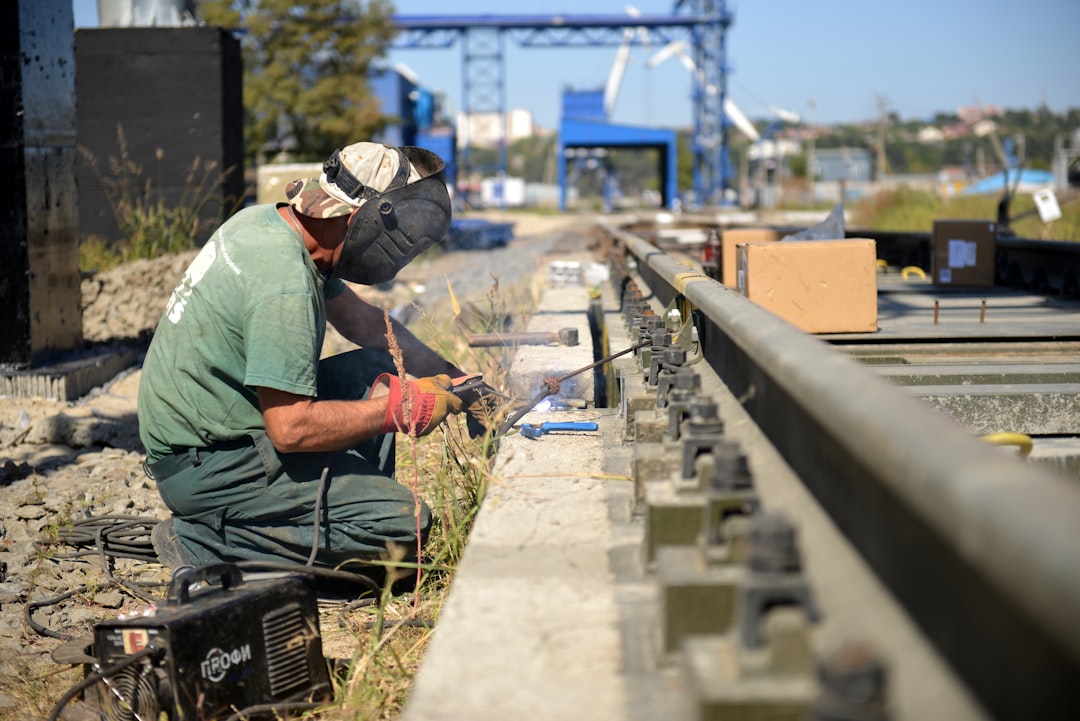

Engage prospects with a scan and streamline customer engagement with FREE QR code marketing tools by Sona – no strings attached!
Create a Free QR CodeFree consultation

No commitment

Engage prospects with a scan and streamline customer engagement with FREE QR code marketing tools by Sona – no strings attached!
Create a Free QR CodeFree consultation

No commitment
In today’s digitally driven world, QR codes have moved from novelty to necessity for home services like siding. They create an instant bridge between physical brand impressions and digital actions: a neighbor walks by your job site, sees your work, scans a code, and books an estimate in seconds without typing a URL or downloading an app. For siding contractors, that means every yard sign, brochure, or vehicle can become a conversion tool instead of a passive touchpoint.
The result is less leakage in your funnel and more measurable growth. Strategic QR placements reduce friction, accelerate follow-ups, and reveal which offline moments drive real demand. When paired with a platform like Sona QR, you can centralize code creation, track engagement, sync with your CRM, and attribute revenue with confidence.
This article gives siding contractors a practical, proven playbook for deploying QR codes across your marketing mix. From placements and formats to segmentation and attribution, you will learn how to transform every printed asset into a high-performing digital entry point that captures more qualified leads. For broader ideas, see Sona QR’s marketing guide.

Siding contractors often lose high-intent prospects who encounter yard signs, truck graphics, or flyers but never fill out a form or call. QR codes close the gap between physical marketing and your digital funnel by turning moments of interest into immediate action. They also capture the who, where, and when behind each engagement so you can prioritize outreach and make smarter investments.
Start by mapping your offline touchpoints and replacing analog processes with dynamic alternatives. Paper sign-up sheets at home shows can become scan-to-book estimate forms using Google Forms QR. Static yard signs can become trackable gateways to project galleries and quote requests. Door hangers can offer instant discount redemptions or financing pre-qualification. Each scan becomes data you can use to refine messaging, timing, and follow-up.
Modern platforms like Sona QR streamline code generation, dynamic destination updates, and analytics. That means you can launch fast, test what works, and scale the placements and messages that consistently convert.

Homeowners often begin their search with offline cues: a freshly completed project in the neighborhood, a postcard in the mail, a booth at a home show. Without a simple way to capture that interest, many of those potential leads remain anonymous. QR codes turn these moments into measurable digital engagements you can nurture into revenue. Contractors are already seeing tangible gains from QR adoption in the field; see these construction QR benefits.
They also match how people want to act today. No one wants to search a brand name, find the right page, and then fill out a long form. A QR scan that jumps to a mobile-optimized estimate page or a pre-filled SMS request is fast and intuitive. Contractors who deploy this type of shortcut see higher engagement and shorter time to first conversation; try pre-filled texts with this SMS QR guide.
Applied across common contractor materials, QR strategies help ensure that every homeowner who notices your work leaves a digital footprint, resulting in fewer missed opportunities and a tighter, faster sales cycle.

Contractors can match QR formats to specific goals. A walk-by neighbor may want to see a project gallery first, while a mail recipient may be ready to book an estimate. Selecting the right format improves both scan rates and conversion.
Focus on formats that streamline conversations and capture context. Dynamic web links and pre-filled messaging are especially effective for siding, since they accelerate the path to a scheduled visit or pricing discussion. For crews in the field, vCards turn quick interactions into saved contacts that will not get lost.
With Sona QR, you can generate these formats, update destinations on the fly, and view performance from a central dashboard.

Most communities discover contractors through local visibility. A neatly installed facade, a branded truck parked on a busy street, or a postcard in the mail all trigger curiosity. QR codes help you activate those moments to drive measurable engagement and lead capture.
Audit your physical footprint and add codes that map directly to homeowner intent. On a yard sign, a gallery or testimonial page builds trust. On a truck, a “text us now for a free quote” reduces friction for drivers stuck at a light. In mailers, personalized offer pages help you test which neighborhoods and messages produce the best ROI.
Thoughtful placements transform everyday brand impressions into trackable opportunities and help you refine where to invest next.

The most effective contractor QR programs align placement with buyer intent and then track the outcome. Focus on use cases that pull prospects into a conversation or push them one step closer to purchase.
Start with three high-leverage plays: lead capture on yard signs, reviews during the handoff, and education that guides material choices. Each use case creates a clearer path to conversion and yields valuable data for prioritizing follow-ups.
Together, these use cases reduce late or missed engagement and keep prospects active in your funnel from initial curiosity through final decision.
Every scan is a signal about who your prospect is and what they want. By distributing unique codes across assets and stages, you automatically segment your audience based on behavior, context, and intent.
This segmentation lets you tailor follow-up by what someone scanned and where it happened. A homeowner who scans a code on a yard sign near a premium fiber cement install may be a strong candidate for a higher-end package. Someone who scans a door hanger tied to a discount offer may need pricing-specific nurturing.
With Sona QR, each code becomes a smart entry point that records context and helps your team retarget based on real behavior instead of guesswork.
Marketing works best when every channel reinforces the next. QR codes connect your offline impressions with digital experiences and performance data so you can move prospects through the funnel continuously.
A homeowner who sees your brand multiple times across yard signs, mailers, and social becomes more likely to act. QR codes let you orchestrate those moments into a coherent journey and capture the resulting signals in one place, which makes your budget more efficient and your message more relevant.
QR codes function as the offline onramp to your digital marketing engine. With a centralized platform like Sona QR’s product overview, you can manage all codes, monitor performance by channel, and sync scan activity to your CRM and ad platforms for reliable measurement and faster growth.
A structured approach keeps your first QR deployments focused and measurable. The following steps help you pinpoint the right use case, set realistic targets, and ensure your team can act quickly on the demand you create.
Treat the checklist as a repeatable framework. You can run multiple micro-campaigns at once, each with its own goal, code type, and placement. Over time, you will build a robust set of insights that guide budgeting and creative decisions.
Resolve a specific pain point: drive more estimate requests from yard signs in a target neighborhood, secure more post-install reviews during handoff, or speed up lead capture at a home show. A tightly scoped objective keeps the campaign simple to design and easy to measure.
Set a clear success metric such as 50 estimate requests from three neighborhoods in 30 days, or a 30 percent lift in review volume month over month. Use your CRM to track conversions and time to first contact so you can assess impact beyond the scan count.
Use static codes when the destination will not change, such as a PDF brochure or a general gallery link. Use dynamic codes when you need tracking, destination edits, or segmentation by placement. For most marketing use cases, dynamic codes give you the flexibility and attribution you want.
If the campaign includes A/B testing or time-bound promotions, dynamic codes are essential. With Sona QR, you can update destinations mid-campaign without reprinting and retain all performance data in one view. Start creating QR codes for free.
Customize codes with your logo and brand colors, and add a clear call to action like “Scan for Special Financing” or “Scan to Book a Free Estimate.” Ensure there is sufficient contrast and that the code is large enough to scan quickly at the intended distance.
Test in real-world conditions. Scan from different angles, in bright sun and low light, on multiple devices, and from typical distances for each placement. Validate that the landing page loads quickly and is mobile optimized with concise forms.
Focus on placements that catch attention during natural pauses. Job site signs reach nearby homeowners who already see your craftsmanship. Vehicle decals work at stoplights and in driveways. Door hangers and direct mail reach people where they make household decisions.
Ensure codes are not obstructed and that the CTA is legible from a few steps away. For moving environments like vehicles, keep the code large and the message short so drivers can scan quickly and safely when stationary.
Instrument each code with UTM parameters and connect Sona QR to your analytics stack and CRM. Monitor scan rates, engagement by time and location, and conversion behavior on the destination page.
Iterate continuously. A/B test CTAs, adjust landing page content, and experiment with placement sizes and materials. Share insights with your team so the next print run or signage order reflects the highest performers.
A simple rinse-and-repeat cadence will compound results. As you identify winners, roll them out across more neighborhoods, trucks, or print formats and retire underperformers quickly.
Tying offline spend to closed business is a persistent challenge for contractors. Without visibility from scan to sale, it is hard to know if yard signs or mailers deserve more budget or if a vehicle wrap is generating enough pipeline to justify the cost. QR codes, paired with the right analytics, make full-funnel attribution possible. For frameworks, see this guide to offline attribution.
Start by tracking not just scans but the actions that follow. Did the scan lead to a form fill, a phone call, a financing application, or a booked visit? Syncing this journey into your CRM builds a clear line from physical asset to revenue, which lets you defend budgets and double down on what works.
Sona QR captures real-world engagement, while Sona.com extends attribution further by connecting anonymous scans to known buyers using identity resolution and multi-touch models. Together they transform QR engagement into a performance marketing signal you can act on with confidence.
Consistent, multi-touch QR strategies outperform sporadic one-offs. Treat QR codes as a framework that connects every print asset to a next step and every scan to a workflow. When marketing and operations align around this approach, your team responds faster and closes more business.
Make your campaigns easier to manage by standardizing design, tagging, and reporting. Decide on a CTA style, a UTM schema by channel, and a process for routing scans to the right rep. Train crews to carry QR-enabled materials and to point homeowners to the best next action during site visits and handoffs. For perspective on barriers and opportunities, see these QR adoption challenges.
A creative example is a “Scan for Color Visualizer” code on siding samples in your showroom or at a home show. Another is a “Scan to Pay Your Deposit” QR on estimates or invoices to reduce friction and speed project start dates.
Putting QR codes to work in the field reveals clear patterns. Contractors who combine strong CTAs with tight follow-up see both higher scan-to-lead rates and faster time to estimate. Those who layer review capture and financing pre-qualification stabilize their pipeline and defend margin more easily.
The following examples illustrate how small adjustments create measurable gains. Each uses scannable entry points that convert a familiar touchpoint into a trackable, conversion-oriented interaction that rolls up neatly into CRM and attribution reporting.
A contractor included QR codes on thank-you cards after project completion. The code opened a referral form that auto-filled the customer’s information and offered a small incentive. The form fed directly into the CRM and flagged the job source as “Referral.”
The result was a measurable surge in qualified inbound leads and a 20 percent reduction in acquisition cost over 90 days. Because each referral was tied to a code and a customer, the team could quickly identify advocates and reward them, which encouraged more sharing.
Showroom samples and in-home presentations featured QR codes that linked to head-to-head comparisons of vinyl, engineered wood, and fiber cement. Each page included pros and cons, durability ratings, visuals, and a calculator for long-term value.
Prospects self-educated at their own pace. Sales reps used scan notifications to follow up with targeted guidance, which shortened the decision cycle and improved close rates on premium packages.
At an expo, QR-enabled banners captured contacts with a simple offer: “Win a Free House Wash. Scan to Enter.” The code led to a short form with consent for follow-up. Each scan was tagged with the event name and time. See more ideas with QR giveaways.
Over two days, the team captured more than 200 new contacts, far outpacing paper forms. Within a week, the contractor booked dozens of estimates using personalized outreach triggered by the scan data synced to the CRM.
Interviews and post-campaign surveys confirm that strategic QR programs help contractors convert offline interest into qualified digital leads. The combination of fast engagement, clear attribution, and automated follow-up closes long-standing gaps between field visibility and sales performance.
Small mistakes can undermine otherwise strong campaigns. The most common issues involve unclear calls to action, poor scannability, and sending people to generic homepages that lack a clear next step. Tighten these areas and your performance will lift quickly. For additional tactical advice, review these contractor best practices.
Equip your teams to make the most of every scan. Provide quick-reference guides that explain each code’s destination and the standard follow-up workflow. Encourage reps to ask prospects if they scanned and to review what the prospect viewed so the conversation picks up right where the digital experience left off.
Proactive monitoring, team training, and CRM integration turn QR codes from a tactical gimmick into a reliable growth engine. With clean data and quick responses, you will convert more interest and build a repeatable, scalable program.
QR codes have become a strategic advantage for siding contractors by transforming job site signs, trucks, and brochures into trackable, conversion-driven digital assets. When you address pain points like missed leads, delayed outreach, and untracked engagement, you connect offline moments of curiosity with digital actions that expand your pipeline.
The best programs deliver value across the entire journey. Homeowners can scan to compare materials, pre-qualify for financing, or request a callback. Your team gains instant visibility into who engaged, where they engaged, and what they want next. That makes follow-ups more relevant and speeds up decisions.
If you have not yet deployed QR codes systematically, start small with one or two high-impact use cases such as yard sign lead capture and post-install reviews. Use a platform like Sona QR to generate and manage dynamic codes, add UTMs, and sync scan activity to your CRM. As the data comes in, refine your placements and messaging, then scale to more vehicles, neighborhoods, and print assets. Start creating QR codes for free.
With a deliberate approach and the right tools, every sign or brochure becomes a catalyst for measurable growth. Your crews will keep building your reputation in the field while your QR-enabled marketing machine turns that reputation into a consistent stream of qualified opportunities.
QR codes have transformed the siding contractors industry from traditional marketing into a powerful, data-driven conversion engine. Whether it’s attracting new clients, enhancing customer engagement on-site, or streamlining the estimate and booking process, QR codes replace guesswork with instant, actionable insights that turn every interaction into a measurable opportunity.
Imagine knowing exactly which flyers, truck wraps, or door hangers generate the most leads—and being able to update your campaigns instantly without costly reprints. With Sona QR, you can create dynamic, trackable QR codes in seconds, monitor scan activity in real time, and directly link each interaction to revenue growth. No missed leads, no wasted spend—just smarter, more effective marketing.
Start for free with Sona QR today and transform every scan into a new customer, a booked project, or a lasting referral.
QR codes create an instant link between offline brand impressions and digital actions, reducing lead leakage, accelerating follow-ups, capturing engagement data, and enabling measurable growth through trackable and dynamic marketing assets.
Siding contractors can improve their online presence by deploying QR codes on yard signs, trucks, brochures, and mailers to drive immediate digital engagement, capture qualified leads, sync data with CRMs, and provide mobile-optimized landing pages for easy customer interaction.
Choosing a reliable siding contractor involves looking for those who effectively engage prospects through transparent communication, measurable marketing efforts like QR code campaigns, positive customer reviews captured via QR codes, and a demonstrated ability to provide clear estimates and follow-ups.
Best practices include verifying contractor credibility through customer reviews, requesting detailed estimates possibly obtained via QR-enabled forms, assessing their communication responsiveness, and ensuring they use modern tools to track and manage leads and project progress.
The article does not specify average costs for siding installation services.
Use Sona QR's trackable codes to improve customer acquisition and engagement today.
Create Your FREE Trackable QR Code in SecondsJoin results-focused teams combining Sona Platform automation with advanced Google Ads strategies to scale lead generation

Connect your existing CRM

Free Account Enrichment

No setup fees
No commitment required

Free consultation

Get a custom Google Ads roadmap for your business






Launch campaigns that generate qualified leads in 30 days or less.
